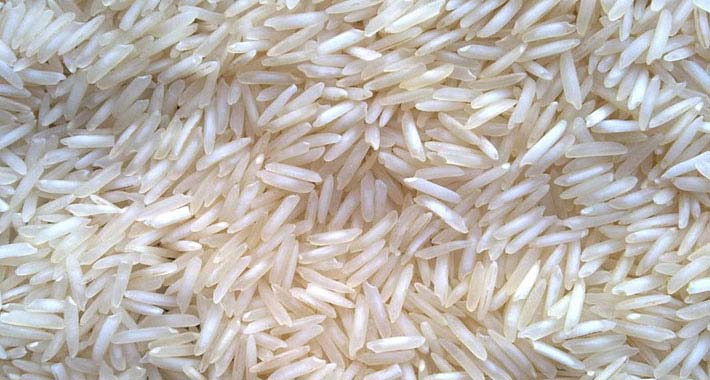Basmati’s early variety starts arriving in Amritsar mandis, Punjab farmers disappointed at low returns for PUSA 1509
By Anju Agnihotri Chaba
Jagwinder Singh, a rice farmer of Amritsar district, sold his early variety of basmati – PUSA 1509 – on Tuesday at Bhagtanwala grain market, one of the biggest paddy markets in Punjab. But the returns were disappointing.
Singh sold the produce at Rs 2,500 per quintal, suffering a loss of over Rs 1000 per quintal compared to last year’s return of Rs 3,612 per quintal. Singh says his crop fetched him an average of Rs 3,400 per quintal last year amid certain price fluctuations.
Singh who has sown PUSA 1509 on 10 acres of land at Othian village is staring at a double loss this year as his yield has declined as well, thanks to prolonged heat conditions in Punjab, which is the leading producer of basmati in the country. PUSA 1509 is grown in 23 percent of the total basmati area.
“First, my yield decreased to 15-16 quintals per acre against 23-24 quintals last year, and now the price has dipped by over Rs 1,000 less per quintal. I will face a loss of Rs 20,000 to 25,000 per acre,” he said.
Jagwinder Singh’s is not an isolated case. Other farmers at the mandi are also worried at the lower returns despite the huge demand for the variety. They have demanded the government to keep a tab on the traders who purchase basmati rice at lower rates from the farmers and sell to customers at much higher rates.
“Farmers like us are at their (traders) mercy,” Singh added.
Parminder Singh, who harvested the PUSA 1509 variety from his five-acre plot, said that last year he got a return between Rs 3,200 and 3,700 per quintal. But this season, the paddy farmer suffered a loss of Rs 800 to 1300 per quintal which according to him was due to “high moisture level in the crop caused by heavy rain”.
According to market experts, the opening price of Basmati PUSA 1509 that started arriving at Bhagtanwala grain market a couple of days ago was the lowest in four years. This Mandi typically experiences an influx of around 1.25 bags of paddy weighing approximately 35 kg each, including 60 lakh bags of basmati, mainly PUSA 1509.
As on Tuesday, the highest rate for the early variety of basmati in the Amritsar mandi reached Rs 2,717 per quintal, and the lowest was Rs 2,200. Last year, the opening rate for the same variety was between Rs 3,200 and Rs 3,823 per quintal. In 2022, the opening price ranged between Rs 3,400 and Rs 3,700 per quintal, while in 2021 it was between Rs 2,350 and Rs 2,891 per quintal.
Basmati is a crucial commodity purchased by private players, including major suppliers and exporters both domestically and internationally.
“Approximately 15,000 bags have already reached Amritsar’s Bhagtanwala mandi and farmers are not happy with the price, especially when they have fetched much higher prices for the same crop in previous years,” said Rakesh Tuli, president of the Punjab Anaaj Mandi Mazdoor Union.
He highlighted that Amritsar mandi stands as the primary hub for the PUSA1509 variety in the state. The other major basmati varieties cultivated in the state are the longer varieties such as PUSA 1121 and PUSA 1718.
Commission agent Deepak Arora in the same mandi agreed that the yields this season are quite low due to untimely rain and prolonged heat conditions in May and June. He noted that, on an average farmers are getting 16-17 quintals per acre this year, and the rate is quite low at the moment. He attributed the lower prices in part to the Central Government’s capping of the Minimum Export. Price (MEP) on basmati rice.
The Central Government on August 25, 2023, in a sudden and abrupt decision, came out with an advisory to cap export price on basmati rice to US Dollar 1200 per tonne, drawing criticism from exporters. All the exporters asserted that the government should immediately withdraw the price cap and allow free trade. The Exporters Association made several representations to the Minister of Commerce and held several meetings to convince the government to either waive off the price cap or reduce the MRP.
Finally, the Centre agreed to bring down the price cap to $950 per tonne. But exporters were against introducing a cap on export as it would be a big blow to India’s trade.
Recently, ahead of harvesting of the early variety of basmati, the rice exporters had made a detailed presentation to the Union Minister of State for Commerce and Industry Jitin Prasada during his two-day visit to Amritsar on August 3 and 4.
Arvinderpal Singh, president of Punjab Rice Millers and Exporters Association, pointed out that basmati rice was being exported from India for the past 50 years without any price cap or restrictions and enjoyed a large overseas customer base in over 80 countries. Director of the Association Ashok Sethi also expressed concerns over the drop in prices that would hurt the basmati cultivators of Punjab.
Exporters said that India’s basmati exports is about 80 per cent in the price bracket around $850, while the higher value of exports ranging from $1,200–$1,700 constitutes 20 per cent of export from India.
This article has been republished from The Indian Express.

